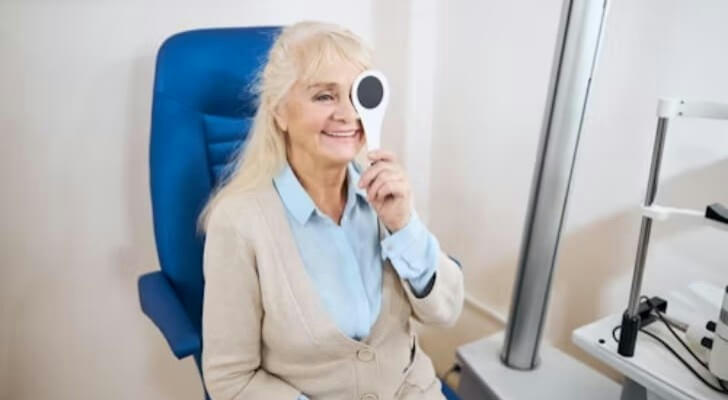Modern Laser Eye Surgery: Achieving Clear Vision Safely and Effectively
Laser eye surgery has transformed the lives of millions seeking freedom from glasses and contact lenses, offering a precise, long-lasting solution for common vision issues. Tailored to meet the needs of diverse age groups, this guide explores the latest advancements in laser vision correction—with a focus on women and older adults, two groups increasingly prioritizing eye health and independence. From scientific principles to real-world outcomes, here’s what you need to know.

The Science Behind Laser Vision Correction
Laser procedures correct vision by reshaping the cornea, the eye’s transparent outer layer, to ensure light focuses accurately on the retina. Technological innovations now allow surgeons to customize treatments based on individual eye anatomy, improving both safety and outcomes. Key methods include:
LASIK (Laser-Assisted In Situ Keratomileusis)
A small flap is created on the cornea’s surface, allowing a laser to reshape the underlying tissue.
Ideal for correcting nearsightedness, farsightedness, and astigmatism in patients with stable prescriptions.
Recovery: Most patients notice improved vision within 24 hours.
SMILE (Small Incision Lenticule Extraction)
A flapless procedure where a laser creates a tiny lens-shaped disc within the cornea, which is then removed through a small incision.
Benefits those with dry eyes or active lifestyles (e.g., athletes, parents).
PRK (Photorefractive Keratectomy)
The cornea’s outer layer is gently removed (no flap created), and the surface is reshaped with a laser.
Suits patients with thin corneas or specific occupational needs (e.g., military personnel).
Refractive Lens Exchange (RLE)
Replaces the eye’s natural lens with an artificial intraocular lens (IOL).
Often used for age-related vision loss, such as presbyopia (“aging eyes”) or cataracts.
Why Women Choose Laser Eye Surgery
For women balancing careers, family, and personal time, laser surgery offers practical and emotional benefits:
Convenience: Managing children, workouts, or professional demands becomes easier without fogged glasses or misplaced contact lenses.
Confidence: Many report feeling more self-assured in social or professional settings post-surgery.
Aesthetic Freedom: Avoid makeup smudges from glasses or the hassle of inserting contacts.
Data Insight: Surveys indicate that over 70% of female patients cite “time saved on daily routines” as a major motivator. Additionally, 85% report improved performance in physical activities like yoga or swimming post-surgery.
Case Study: Sarah, a 38-year-old nurse and mother of three, struggled with contacts during 12-hour shifts. After SMILE surgery, she shared, “I can check vital signs at work and play tag with my kids without worrying about my lenses drying out.”

Laser Surgery for Older Adults: Addressing Age-Related Vision Changes
As we age, natural lens flexibility declines, leading to presbyopia, cataracts, or difficulty adapting to light. Modern procedures like RLE or laser-assisted cataract surgery can address these issues simultaneously:
Presbyopia Solutions
- Multifocal or accommodating IOLs can restore near, intermediate, and distance vision, reducing dependence on reading glasses.
Cataract Prevention
- Clouded lenses are replaced with clear artificial ones, often correcting other refractive errors in the process.
Safety Note: A comprehensive eye exam is critical to assess risks like glaucoma or macular degeneration, which may require additional care.
Case Study: At 65, retired engineer James struggled with cataracts and nighttime driving. After RLE with a premium IOL, his vision improved to 20/25. “I finally feel safe driving to visit my grandkids,” he said.
Data Insight: Studies show 94% of patients over 55 experience enhanced independence post-surgery, including improved mobility and reduced accident risks.
Dispelling Common Myths
“Recovery is long and painful.”
- Fact: Most patients resume non-strenuous activities within 1–2 days. Advanced laser systems minimize discomfort, with dryness typically resolving within weeks using prescribed eye drops.
“Laser surgery is risky for older adults.”
- Fact: RLE and other lens-based procedures are specifically designed for age-related conditions, with success rates matching those of younger patients when performed by qualified surgeons.
“Results aren’t permanent.”
- Fact: While natural aging can cause minor changes, laser-corrected corneas or implanted IOLs remain stable for decades. Follow-up “touch-up” procedures are rare (<5% of cases).
Maximizing Safety and Success: A Step-by-Step Guide

Pre-Surgery Evaluation
Expect tests measuring corneal thickness, pupil size, tear production, and overall eye health.
Discuss medical history (e.g., diabetes, autoimmune conditions) with your surgeon.
Procedure Day
The process takes 10–30 minutes per eye, with numbing drops ensuring minimal discomfort.
A friend or family member should accompany you home.
Post-Surgery Care
Avoid swimming, eye rubbing, or dusty environments for 1–2 weeks.
Attend follow-up appointments to monitor healing.
Choosing the Right Surgeon and Technology
Credentials: Verify board certification in ophthalmology and specialized training in laser procedures.
Technology: Look for clinics offering wavefront-guided lasers (maps microscopic eye irregularities) and femtosecond lasers (enhances precision in flap creation).
Patient Reviews: Seek providers with testimonials highlighting clear communication and personalized care.
Final Takeaways
Laser eye surgery is no longer a one-size-fits-all solution. With options ranging from quick corneal adjustments to lens replacements addressing multiple age-related issues, it’s a viable choice for women seeking convenience and older adults aiming to maintain an active lifestyle.
By prioritizing expert consultations and cutting-edge technology, patients can achieve lasting clarity—whether that means seeing a child’s smile clearly or enjoying a sunset without glasses.
Always consult a licensed ophthalmologist to determine the best approach for your vision needs.
